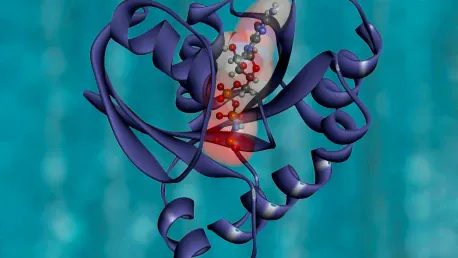In a groundbreaking study conducted by researchers at the Peter Doherty Institute for Infection and Immunity, a significant discovery has been made, revealing a novel mechanism by which the body regulates a type of immune cell known as unconventional T cells. These cells are pivotal in mounting rapid responses to various diseases, making this discovery a milestone in understanding immune system functionality. Published in the Journal of Experimental Medicine, the research identifies a “kill switch” that operates to control these T cells, effectively preventing excessive activity and harmful inflammation. The findings offer potential new avenues for treating a multitude of health conditions, bringing us one step closer to enhancing immune response capabilities.
The Role of Unconventional T Cells
Unconventional T cells, which include mucosal-associated invariant T cells (MAIT), gamma delta T cells (γδT), and natural killer T cells (NKT), have garnered significant attention due to their sensitivity to NAD, a molecule released during cell and tissue damage. These cells play a critical role in the immune system’s rapid response mechanism, enabling swift action against infections and injuries. The detection of NAD by the P2RX7 receptor on these unconventional T cells triggers a self-destruct mechanism, serving as a built-in fail-safe to prevent overactivity and subsequent inflammation. By shedding light on this mechanism, researchers have highlighted a sophisticated way the body maintains a balance in its rapid immune response, ensuring that it remains effective without becoming excessively harmful.
The implications of this discovery are vast, as the self-destruct mechanism can lead to premature cell death under certain conditions, limiting the defense capabilities of these unconventional T cells. Understanding how to regulate this mechanism without compromising the immune response opens new therapeutic possibilities. For instance, by modulating the activity of the P2RX7 receptor, it might be possible to enhance the immune system’s effectiveness in combating diseases such as cancer, where a strong, rapid response could be life-saving. On the other hand, in conditions characterized by chronic inflammation, inhibiting this receptor could help reduce excessive immune activity, thereby alleviating symptoms and improving patient outcomes.
Discovery of a New Subgroup of T Cells
In their study, researchers also identified a previously unnoticed group of unconventional T cells that express both IFN-gamma and IL-4, two crucial molecules for regulating immune responses. These findings are notable, as these specific T cells usually self-destruct in laboratory settings due to their sensitivity to NAD. However, by blocking the P2RX7 receptor, researchers were able to preserve these cells, thereby enabling a better understanding of their diverse roles in immune functions. This discovery provides new insights into the complex interactions within the immune system and how different types of T cells contribute to overall immune regulation.
The preservation of these unconventional T cells opens up new research avenues, particularly in understanding how they might be leveraged for therapeutic purposes. Given that these cells are prevalent in organs such as the liver, where they act swiftly against infections, inflammation, and tissue damage, understanding their regulation could lead to breakthroughs in treating diseases that affect these organs. Enhancing the activity of these T cells could provide a more robust defense against infections, while also controlling inflammation more effectively. This balance is crucial, as an unregulated immune response can lead to tissue damage and chronic disease.
Potential Therapeutic Applications
Researchers at the Peter Doherty Institute for Infection and Immunity have made a substantial breakthrough, uncovering a novel mechanism by which the body regulates unconventional T cells, a crucial type of immune cell. These T cells are essential for rapid responses to various diseases, making this finding a significant step forward in understanding immune system operations. The study, published in the Journal of Experimental Medicine, highlights the discovery of a “kill switch” that controls T cells. This mechanism prevents these cells from becoming overly active and causing harmful inflammation. These insights could open new paths for medical treatments, potentially addressing a variety of health conditions more effectively. In essence, this research brings us closer to enhancing our immune response, which could lead to improved therapies and preventative measures for numerous diseases, ultimately contributing to better overall health outcomes.









